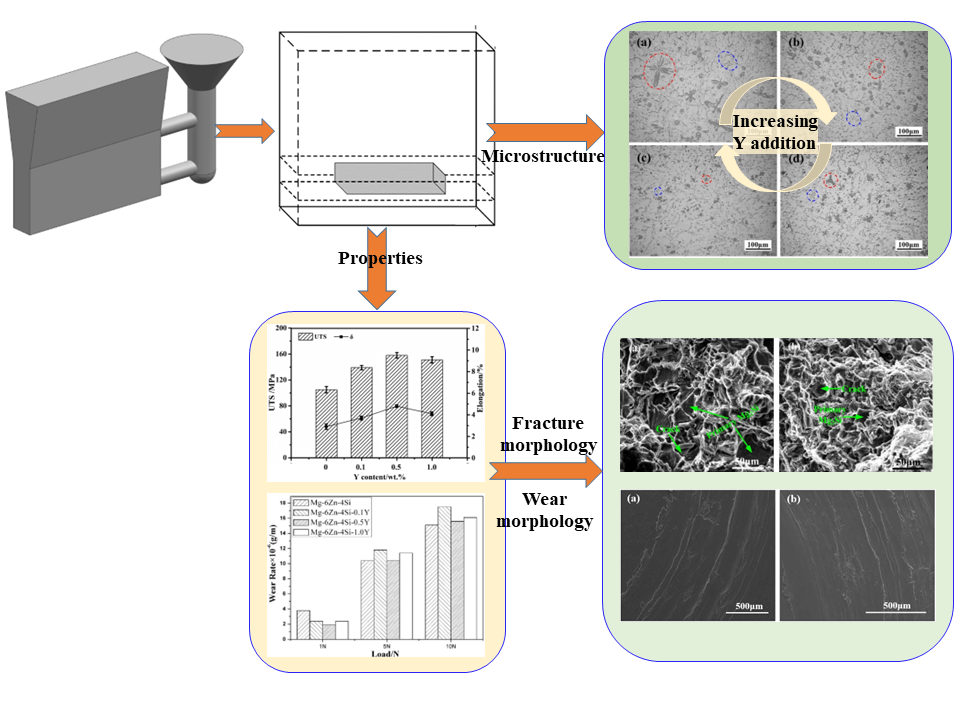 Open Access
Open Access
ARTICLE
Tensile Properties and Wear Resistance of Mg Alloy Containing High Si as Implant Materials
Key Laboratory of Advanced Materials Design and Additive Manufacturing of Jiangsu Province, Jiangsu University of Technology, Changzhou, 213001, China
* Corresponding Author: Mengqi Cong. Email:
Journal of Renewable Materials 2023, 11(4), 1977-1989. https://doi.org/10.32604/jrm.2023.023849
Received 31 July 2022; Accepted 22 September 2022; Issue published 01 December 2022
Abstract
Magnesium alloy has been considered as one of the third-generation biomaterials for the regeneration and support of functional bone tissue. As a regeneration implant material with great potential applications, in-situ Mg2Si phase reinforced Mg-6Zn cast alloy was comprehensively studied and expected to possess excellent mechanical properties via the refining and modifying of Mg2Si reinforcements. The present study demonstrates that the primary and eutectic Mg2Si phase can be greatly modified by the yttrium (Y) addition. The size of the primary Mg2Si phases can be reduced to ~20 μm with an addition of 0.5 wt.% Y. This phenomenon is mainly attributed to the poisoning effect of the Y element. Moreover, wear resistance and tensile properties of the ternary alloy have also been improved by the Y addition. Mg-6Zn-4Si-0.5Y alloy exhibits optimal tensile properties and wears resistance. The ultimate tensile strength and the elongation of the alloy with 0.5 wt.% Y are 50% and 65% higher than those of the ternary alloy, respectively. Excessive Y addition (1.0 wt.%) deteriorates the tensile properties of Mg-Zn-Si alloy. The improvement of the tensile properties is mainly due to the modification of primary and eutectic Mg2Si phases as well as the solid solution strengthening of the Y atoms. This study provides a certain implication for the application of Mg-Zn-Si alloys containing Y elements as regeneration implants.Graphic Abstract

Keywords
Cite This Article
 Copyright © 2023 The Author(s). Published by Tech Science Press.
Copyright © 2023 The Author(s). Published by Tech Science Press.This work is licensed under a Creative Commons Attribution 4.0 International License , which permits unrestricted use, distribution, and reproduction in any medium, provided the original work is properly cited.


 Submit a Paper
Submit a Paper Propose a Special lssue
Propose a Special lssue View Full Text
View Full Text Download PDF
Download PDF Downloads
Downloads
 Citation Tools
Citation Tools